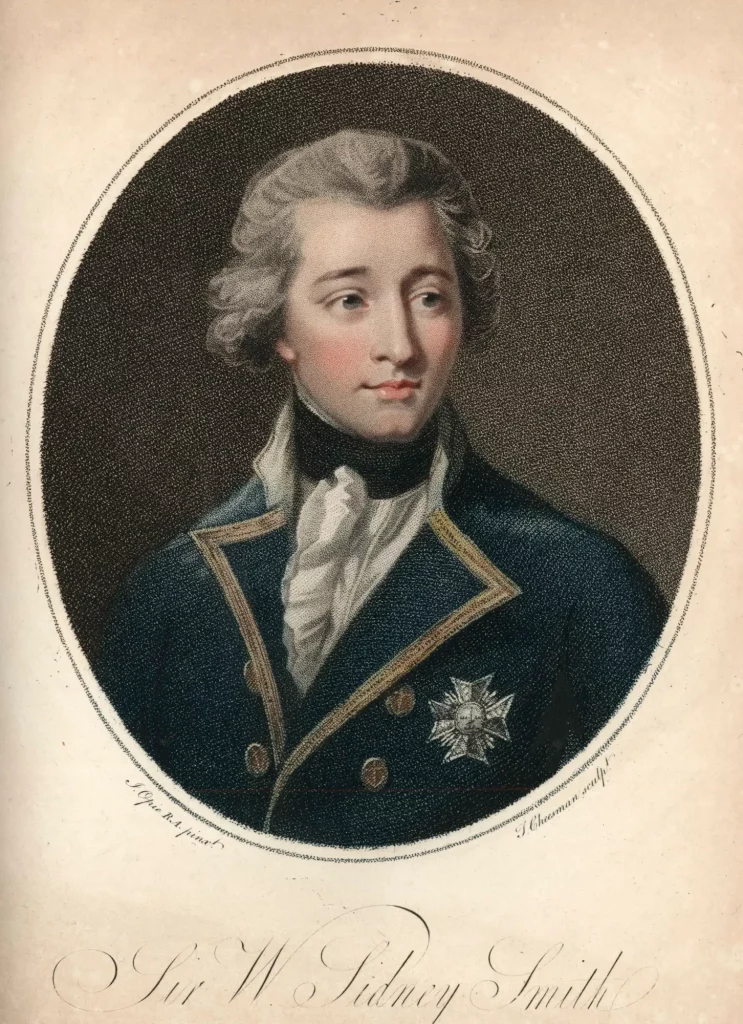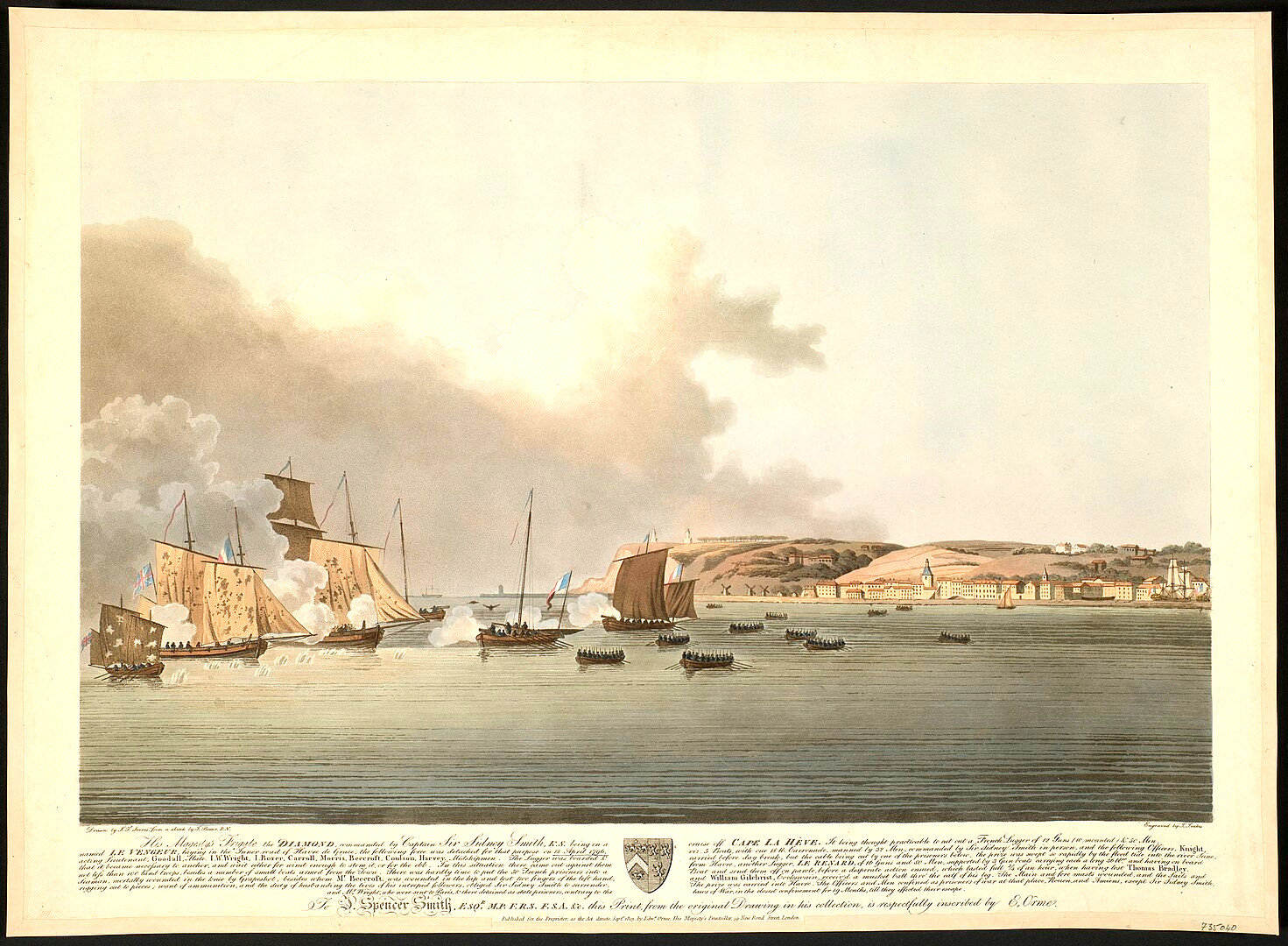
Admiral Sir William Sidney Smith (1764 – 1840), a name often overshadowed by the more celebrated Horatio Nelson, was a remarkable naval officer who played a crucial role in shaping the course of the American and French Revolutionary Wars. Despite his many accomplishments, Smith’s legacy has been largely overlooked, leaving him as a forgotten hero of these pivotal conflicts.
Early Life and Naval Career
Born into a military and naval family in London in 1764, Smith joined the Royal Navy at the age of 13. By his mid-teens, he had already seen action in the American Revolutionary War, demonstrating his courage and strategic acumen. In 1790, he volunteered to serve in the Swedish Navy and distinguished himself in the Battle of Svensksund, earning a Swedish knighthood and the Order of the Sword.
The Siege of Acre and the Enmity of Nelson
In 1793, during the French Revolution, Smith found himself in Toulon, France, where he was tasked with supporting French Royalists against the Revolutionary forces. Despite the overwhelming odds against them, Smith and his men successfully evacuated the Royalists from the city. This led to a bitter rivalry with Nelson, who accused Smith of failing to destroy more French ships during the evacuation.
Napoleon’s Defeat at Acre
In 1799, Smith’s brilliance shone through once again during the Siege of Acre. As Napoleon Bonaparte’s army laid siege to the city, Smith, anticipating the attack, reinforced the Turkish defenders with cannons and sailors from British warships. His actions proved invaluable, repelling multiple French assaults and forcing Napoleon to abandon his campaign in Syria.
Further Naval Victories and a Life of Public Service
Smith continued to serve with distinction throughout the Napoleonic Wars, leading British forces to victory in Egypt and Portugal. In 1805, he narrowly missed the Battle of Trafalgar, where Nelson lost his life. Smith’s actions during the Battle of Maida and the evacuation of the Portuguese royal family further cemented his reputation as a capable and resourceful naval officer.
A Life of Activism and Social Reform
After retiring from active service in 1815, Smith devoted himself to the anti-slavery movement. He campaigned tirelessly for the abolition of slavery in North Africa, using his diplomatic and parliamentary connections to raise awareness and advocate for military action against Barbary pirates.
Legacy of an Unsung Hero
Despite his many accomplishments, Admiral Sir William Sidney Smith remains a largely forgotten hero. His contributions to the American and French Revolutionary Wars, as well as his dedication to social reform, deserve to be better recognized. His life serves as an inspiration to all those who strive to make a positive impact on the world.
Sources
1. Pocock, Tom. A Thirst for Glory: The Life of Admiral Sir Sidney Smith. Random House (UK), 1998. P.55
2. Ibid, p. 55-56. According to legend, Napoleon’s motivation for destroying the Temple Prison in 1804 was to prevent Smith’s prophetic words from coming true.
3. Napoleon admired and emulated many aspects of Alexander the Great’s conduct, but it was Napoleon’s campaign in the East that seems to have drawn on the ancient general the most. Mclynn, Frank. Napoleon: A Biography. New York, Arcade Pub, 2011. P. 200 in particular.
4. Pocock, pp. 107-108
Original: Shappel

